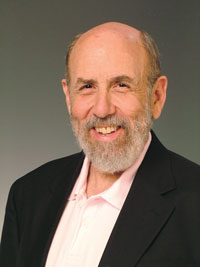In a perfect world, every injured worker would be treated by a physician trained in Occupational Medicine, one who understands how to facilitate recovery and expedite return to work.
However, it’s not unusual for employers and employees to be dealing with a family or urgent care practitioner who has little or no training in Occupational Medicine. Demand for trained occupational and environmental physicians far exceeds the supply, and the need continues to grow. In fact, according to the Institute of Medicine (IOM) subcommittee on physician shortage in occupational and environmental medicine, there currently is a dearth of 3,100 to 5,500 physicians.
All too frequently, there are horror stories about physicians asking injured employees how many days they want off work or prescribing an unnecessary or improper treatment. Constrained by inadequate knowledge, declining revenues and pressures to limit visit time, many family and urgent care practitioners know little about Workers’ Compensation beyond filling out the required Workers’ Comp forms.
Exacerbating this problem is that the treating physician focuses 100% on the injury itself, giving little, if any, thought to the employer or arrangements for returning the employee back to work that could actually speed recovery. There is a common bias that injured employees want time off from work and the most expeditious treatment is to give them what they want.
The end result is unnecessary costs and delays in return to work, with the blame being squarely placed on the treating physician. Suspicion and frustration prevail and an antagonistic attitude develops, polarizing the physician/employee/employer relationship.
At a May 2008 symposium of the Institute of WorkComp Professionals, Dr. Michael Weizman, a board certified family physician in Asheville, NC, presented a new perspective on the physician/employee/employer relationship. Prior to being introduced to the Institute’s injury management process, Dr. Weizman’s assumptions were quite typical:
• He assumed the injured patient did not want to return to work.
• He also assumed that injured patients, in general, wanted to blame the employer and take advantage of the situation.
• He further assumed the injured employee’s visits would be unrewarding doctor-patient encounters.
• Finally, he would more than likely give the patient whatever he/she wanted to expedite his day.
Dr. Weizman readily admits that he did not fully understand the mentality and motivation of the injured employee or the attitude and goals of the employer. More importantly, he had little incentive to learn more or change his ways. Although he wanted to do what was right for his injured patients, he lacked knowledge and understanding of Workers’ Compensation and had not been contacted by employers who may have helped him reevaluate his thinking.
However, when he learned more about the value of managing job-related injuries, he realized his approach needed to change (see figure).
Today, Dr. Weizman works to influence patient outcomes based on his newly developed proactive approach to Workers’ Comp cases. While he is committed to expanding his knowledge, he expresses frustration that some employers are surprised by his approach and few employers are proactive in returning injured employees to work.
This points to the need for cost and quality conscious local employers to recognize the value of better medical alternatives and work with physicians who are skilled in urgent care, internal medicine and family practice. In areas where occupational medicine is not accessible, such an intermediate model can benefit both employers and physicians.
For employers, improved management of worker health, injury, illness, and disability in a time of economic stress and rising medical costs can increase their own chance for survival and profitability.
Retaining key employees, reducing Workers’ Compensation costs, strengthening productivity, controlling health care expenses, and improving morale are just some of the many benefits derived from a strong Return-to-Work program.
While physicians would need to commit to additional training, an occupational health component has the potential to expand revenue through the addition of ancillary services for work-related injury care, as well as new business from satisfied patients for non-work-related care.
The success of the model depends on a solid rapport between physicians and employers and building a high level of confidence among injured employees. Key elements include:
• A return-to-work focus that helps reduce lost work time;
• Cost-effective, quality healthcare;
• Services that can be customized according to an employer’s needs;
• Ready access to medical specialists;
• An emphasis on prevention of injury and illness, as well as root causes of workplace accidents;
• Prompt verbal and written communication between physician, employer and employee; and
• An emphasis on total health management, including wellness programs.
While physicians can bear some responsibility in promoting this effort, they must contend with and overcome substantial barriers, such as time constraints, concerns about whether direct liaison with employers is appropriate advocacy or a compromise to patient confidentiality, along with a lack of knowledge about employers’ injury management practices.
To optimize medical services for injured workers, employers are in the best position to take a leading role in organizing and educating those physicians who recognize an opportunity to become more effective in treating their patients with job-related injuries. It is only by understanding the essential job functions, the availability of modified duty and the employer’s concern for the employee that treating physicians can facilitate the healing process by prescribing a regimen that makes it possible for the employee to get back to work as soon as possible.
 Preston Diamond is Executive Director and Co-Founder of the Institute of WorkComp Professionals, based in Asheville, NC. It trains, tests and certifies select insurance professionals to alert employers about the hidden costs and overcharges in the Workers’ Compensation insurance system. He can be contacted at 1-828-274-0959 or [email protected]
Preston Diamond is Executive Director and Co-Founder of the Institute of WorkComp Professionals, based in Asheville, NC. It trains, tests and certifies select insurance professionals to alert employers about the hidden costs and overcharges in the Workers’ Compensation insurance system. He can be contacted at 1-828-274-0959 or [email protected]
